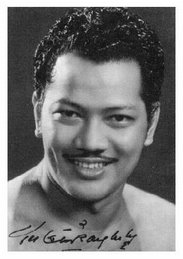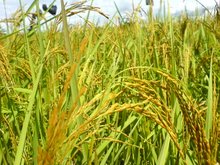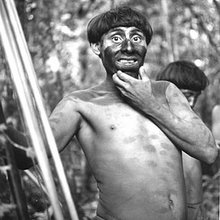
Although koi were known in China, Japan has become the home of Nishikigoi. Japanese farmers developed koi from early mutations found in their stocks of common food carp (Cyprinus carpio) over two hundred years ago.
The word 'koi' was first used about 2500 years ago in China, but brocaded carp, or Nishikigoi as we know them today, were created in Japan and bred for appreciation. The phrase 'living jewel' was coined by the Japanese to describe the wonderful, colourful fish that graced their ponds. Some early specimens were given as gifts to the Emperor and many are seen in the public garden around Japan.
When yo first start keeping koi, it is probably better to choose a fish that appeals to the eyes rather than one you think might be a potential Grand Champion. As your 'eye' gradually improves, so will the koi you choose.
What to look for?
An appreciation of koi is not something you learn overnight, so the first fish you want to buy will probably be on a dealer's recommendation. It is generally the case that the more expensive the fish, the better will be its quality. Remember that koi are not kept for their colour patterns, there are some useful guidelines that may help you to make a good choices:

BODY SHAPE
Learn to differentiate between males and female koi, although this i more difficult when looking at young fish. The male is generally mush thinner than the female, although some are more rotund than others. A koi specialist will also be able to tell the sex by looking for milt (sperm) at the vent.
The female koi is described as having more body volume and is preferred. If you cannot remove the fish from the pond, a good indicator to look for a long, broad abdomen that noticeably turns in behind the ventral fins. If in doubt, ask the dealer the sex of any particular fish that you are considering.
Carefully examine the head and caudal region. The head and should be well rounded and not too short. The mouth must be well placed and not deformed. Eyes must not protrude too much from, or be sunken into, the head. The opercula (gill covers) should not be misshapen and must properly cover the gills. The caudal peduncle region is the area immediately in front of the tail, or caudal, fin. A greater thickness or breadth in this area is considered a good indicator for potential growth.
FIN
These important 'limbs' can have an influential effect on the overall look of the koi and must not be misshapen, split or diseased. Any colouration in the fins must conform to the particular variety in question. Large pectoral fins are admired.
SKIN AND SCALES
Skin is a very important part of a good koi. It should be bright and glossy, and have a deep lustrous shine over the entire body. This is not the same as the skin of the metallic varieties. Fukurin is a recent development in skin quality. At first sight, it can be confused with KinGinRin scalation, but on close inspection, it does not take the same form. Whereas KinGinRin appears to be in the surface of the scales, fukurin shows as a lustrous translucence around them.
The scales should be evenly spaced and well lined up along the length of the body. They should be clearly seen along the body to well below the lateral line. Sometimes scales may be missing or damaged. Ensure that none of them are raised, as this may be sign of illness.
In a leather or doitsu koi, be sure to check any scales along the dorsal and lateral lines for alignment, size and damage.
To be continue..













1 comment:
Good info..
Honey..
Post a Comment